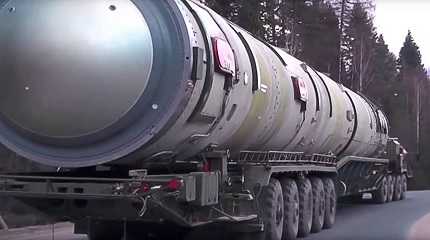
MOSCOW, September 22. /TASS/: The intercontinental ballistic missile Sarmat carries maneuvering warheads, the CEO of the JSC Makeyev Design Bureau (an affiliate of Roscosmos) Vladimir Degtyar, has told TASS.
"The Sarmat is equipped with the most advanced maneuvering warheads," Degtyar said.
The missile is unique in terms of its unsurpassed speed, record-breaking range, the highest accuracy and complete invulnerability while penetrating anti-missile defense systems.
Degtyar said the Sarmat intercontinental ballistic missile would be able to leave the silo under any conditions.
"According to its current characteristics, the missile will leave its silo under any conditions and fulfill its task with 100-percent certainty. This is what its reliability margin is like," Degtyar said.
In June, he told TASS that the silo for the Sarmat was a complex engineering structure that guaranteed the missile’s security against strikes with conventional high-precision weapons and nuclear ones.
Degtyar described the Sarmat as the "crowning achievement" in rocket technology the Makeyev center accomplished in cooperation with a cluster of subordinate enterprises. This newest missile system will reliably ensure the security of Russia from external threats for 40-50 years to come, Degtyar believes.
"In today's adverse geopolitical conditions, it is our impregnable shield, the main factor of nuclear deterrence and a guarantee of peace," he added.
Degtyar recalled that the Sarmat would replace the Voyevoda system, which was created back in the Soviet era.
The new missile, he stressed, is not an analogue, but a new generation ICBM with colossal performance characteristics. "That is why it has already been dubbed an ‘engineering miracle’ and the ‘crowning achievement in rocket technology," Degtyar said.
Sarmat’s characteristics
The Sarmat ICBM was developed at the JSC Makeyev Design Bureau and manufactured at the Krasmash plant (both are affiliates of Roscosmos). According to experts, the RS-28 Sarmat ICBM is capable of delivering a MIRV of up to 10 tonnes to any point on the globe. Its first launch was from the Plesetsk cosmodrome in the Arkhangelsk region on April 20. The test was successful. The design characteristics were confirmed at all stages of the rocket's flight path.




